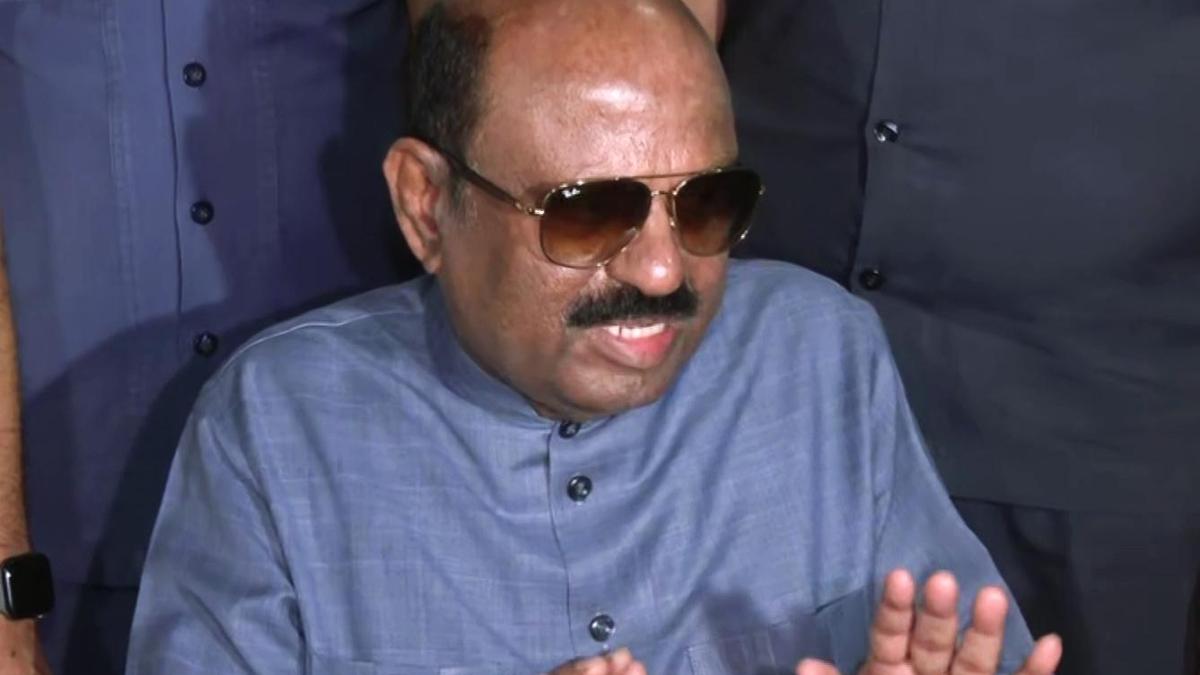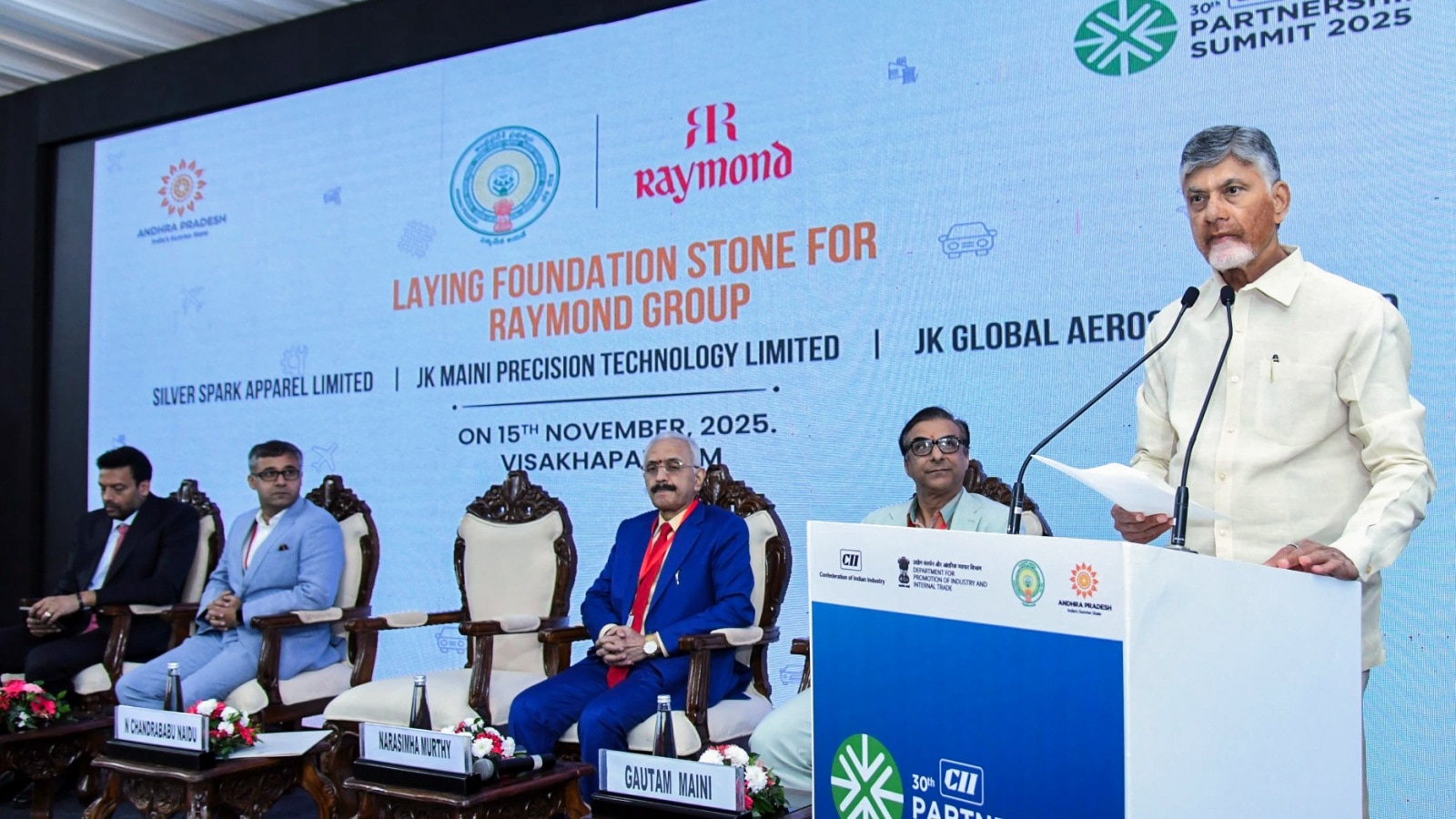Businesses, like people, are born. Some thrive and leave behind a legacy; others rise briefly before plateauing; most remain small enterprises that fade with time. Few survive, pulled back from near-death situations to witness a turnaround.
This is what happened to the 120-year-old Mafatlal Industries group. Once known as one of India’s top textile companies, it had almost perished around the turn of the 21st century, before making a comeback over the past five years or so. From a net loss of ₹180 crore in 2018-19 and a revenue of ₹1,200 crore, the company closed 2024-25 with a profit of almost ₹100 crore and revenue of ₹2,800 crore.
Priyavrata Mafatlal, 38, a fifth-generation Mafatlal and the group’s managing director since 2018, has led the company down the path of profitability. “By focusing on professional management, digital integration, and diversification towards new-age segments,” he says. He has been able to make changes both at the mindset and profitability levels. He says the company strategically transitioned to an asset-light model, diversifying the group’s portfolio across textiles, apparel, and emerging business verticals.
Priyavrata works out of the fourth floor of the 7-storeyed Mafatlal House in Mumbai, India’s financial capital, and Maharashtra’s capital city. Built in 1955, it is located in the Churchgate–Nariman Point area, behind Mantralaya, the secretariat, and next to All India Radio.
From this position of power, they control the Arvind Mafatlal Group, which has four companies, two of which are listed on the stock exchange. While the conglomerate began with textiles, it has expanded into information technology, rubber chemicals, health, and education.
They leaned into their textile heritage, and now up to 90% of the group’s revenues come from uniforms. “Our focus is very clear. We want to focus on our strengths. Our strengths are giving B2B and B2G (business to government) customers what they want,” he says. “We have an advantage because we have already tried and tested this model for years. Uniforms are one very, very big thing that we can do in education, hospitality, hospitals, and the defence sectors,” he adds, his methodical, understated manner showing through his interactions with staff.
An F1 and football fan, he makes analogies between sport and business: “Both are about rhythm, accuracy, and the chemistry of a team chasing one goal. Both demand absolute focus, coordination, and adaptability. The best outcomes come from teams that trust each other, operate with clarity, and respond fluidly to change, whether that’s on the track or in an organisation.”
Ups and downs in Mafatlal’s history
Priyavrata is the grandson of Arvind Mafatlal, an industrialist whose grandfather started the company in 1905. As a tribute to him, the Government of India released a postal stamp on his 100th birth anniversary on October 27, 2023.
One day, his father, Hrishikesh Mafatlal, asked him to take over the business. “I was not aware the day before that I would take over this role. But I took on the responsibility,” he says, admitting that working under a father is not easy.
The family also lives together in Mafatlal Bungalow, an art deco structure built in the 1930s, abutting Altamount and Pedder roads in South Mumbai. “I have a responsibility to my forefathers and to the ecosystem. But I also cannot just keep harping on that,” he says.
After his initial education in Mumbai (then Bombay), then a Harvard Business School degree, he began his journey with the company in 2008 as a marketing executive. “Over time, I learnt the ropes of the business across the group’s diverse divisions. That has been a key force behind the transformation,” he says.
Trivesh D., the chief operating officer of stockbroking firm Tradejini, says, “If you observe Mafatlal today, it feels almost like a company redefining its own history. It was held up for years as a conventional textile player, but this shift that is taking place now is clearly in the direction of a solutions-oriented company,” he says.
The numbers, he says, do the talking: The June 2025 quarter sales were at ₹1,240 crore versus ₹450 crore in the March quarter, and operating profit margins climbed to 4%. “This reflects better cost control, operating leverage, and disciplined financial management.”
Investors, though, look at companies building a future-ready enterprise, one that can balance traditional strengths with new-age opportunities. Trivesh says the uniform segment is still the company’s backbone, whether it’s schools, corporate offices, or hospitality, and that provides a steady base of recurring demand. “They’re also innovating, with sustainable uniform brands like Eco Knits and Mafatlal Greens. But what stands out is how they have layered this with digital initiatives, like virtual uniform galleries and interactive classroom panels.”
He gives the example of how they have executed smart classrooms in 4,000 government schools across 12 States. “Add to that their investments in Pieflowtech, which builds out enterprise IT (information technology) and ERP (enterprise resource planning) automation. Suddenly, you are not looking at a textile company alone; you are looking at a player with a digital-first mindset,” he says.
From glory days to almost bankrupt
The story of Mafatlal Industries began in 1886 when a young entrepreneur, Mafatlal Gagalbhai, started selling fabrics at local fairs. What began as a modest trading venture soon transformed into a well-known enterprise, venturing into modern textile manufacturing and investing in the value chain.
In 1905, the founder joined hands with Chandulal Mahadevia, a close friend and associate from Ahmedabad’s business community and Arthur Shorrock, a British textile expert from Lancashire in England, to revive a defunct textile unit, The Shorrock Mill, marking the firm’s entry into modern manufacturing.
Soon, the Mafatlal enterprise expanded rapidly through the early decades of the 20th century, acquiring mills in Surat, Nadiad, and Bombay, then in the Bombay Presidency. By the 1940s, it had become one of India’s foremost textile houses. Through steady expansion, the group became the third-largest mill owner in India, accounting for roughly 4% to 6% of India’s total textile output, as per data from the Ministry of Textiles.
After Mafatlal Gagalbhai’s passing in 1944, the leadership passed into the hands of his son Navinchandra Mafatlal and grandson Arvind Mafatlal, who ushered in a new era of growth and modernisation in the post-war years by adopting contemporary manufacturing and adhering to high quality.
Arvind, who took over as chairperson in 1955 at 31, became a visionary who redefined the contours of Indian industry. Under his leadership, the group diversified into chemicals, dyes, and petrochemicals, sectors that were at the frontier of India’s industrial evolution. He had created NOCIL and Polyolefins Industries Ltd. (PIL), India’s first petrochemical and plastics complexes, making the Mafatlal group a pioneer in the nation’s march towards self-reliance.
In 1957, the acquisition of Indian Dyestuff Industries Ltd. marked another milestone as the group consolidated its presence across textiles, dyes, and chemicals. By the mid-1960s, it stood among India’s top three business houses.
From the 1960s to the 1980s, Arvind was counted among the top three industrialists of India alongside J.R.D. Tata and L.M. Thapar. Both had diverse business interests, with the Tatas involved in steel making, hospitality, airlines, and motors; and the Thapars involved in paper mills, electronics, and textile mills. Today, the Thapars and Mafatlals are nowhere in the pecking order of big Indian business houses, which are now led by the Ambanis, Adanis, Birlas, and Tatas.
Arvind’s son Hrishikesh, now the chairperson, led the group, which is known as the Arvind Mafatlal group. His tenure from the 90s marked the group’s adaptation to changing market dynamics, global competition, and diversification.
“The economic liberalisation of the 90s brought new challenges for legacy organisations like Mafatlal Industries. There was too much diversification and heavy debt. Changing dynamics were dragging down the company,” says a former employee, asking not to be named.
In the late 1990s and early 2000s, Mafatlal Industries faced a severe financial crisis due to multiple challenges: overleveraging that led the company deep into debt through borrowing; industry cyclicality, when a sector dips; and legacy inefficiencies inherent to generational companies struggling with high operational costs. The company was declared a sick unit in 2000 and referred to the Board for Industrial and Financial Reconstruction (BIFR). It was one of the most difficult phases. Operations were constrained, assets were underutilised, and survival itself was uncertain.
“Our primary goal then was simple: keep the brand alive and honour every commitment. Even during those challenging years, my grandfather and father were clear, “Ek rupeya kisi ka nuksaan nahi hona chahiye,” (No one should suffer a loss of even ₹1), says Priyavrata. “That philosophy has been our moral anchor over the decades,” he emphasises. By 2008-2009, it had come out of BIFR, making it one of the few textile companies in India to do so. “Coming out of BIFR was not just a legal milestone; it was also symbolic of a deeper cultural revival. We had spent nearly a decade restructuring its debt, monetising assets, and realigning the business to a sustainable model,” Priyavrata says.
A new direction
The company’s revival journey happened in three phases: financial restructuring, operational transformation, and mindset change. Under the financial structural reboot, the company sold non-core assets to clear all creditor dues.
Three group entities, the erstwhile textile company, a private company manufacturing denim, and a trading arm, were merged to create a stronger foundation. It exited the denim business in 2017.
In 2020, COVID-19 hit and fractured many systems, including Mafatlal’s. “You’re coming close to death, but you figure a way to fight back. So, the only thing that I pushed for was a mindset change. For the past seven years, I have only pushed for a mindset change,” he says.
Some employees spoke about how the Mafatlal group had to adapt to a customer-centric approach from a manufacturing mindset. It consciously moved towards an asset-light structure, working closely with MSMEs as partners. This aligned with the government’s “Make in India” and MSME growth vision, while also enhancing cost efficiency. Today, nearly 30 factories work for Mafatlal, extending its capacity without over-leveraging its balance sheet.
Through portfolio diversification and sectoral expansion, the company expanded from traditional textiles into uniforms, as well as technical textiles like PPEs, sanitary napkins, and antimicrobial fabrics. It also entered the consumer durables sector linked to institutional supply chains. R.A. Patel, senior vice president and unit head, Nadiad Textile Division, who has spent 47 years with the group, says that what has remained constant is Mafatlal’s people-centric approach.
“If you take a look at any of our units, there are several generations of the same family working here, which is a rare way of showing the bond this company has with its employees.” He says many join and retire from the organisation, and have grown with it. Mafatlal Industries today is a B2B and B2I (business-to-institutions) powerhouse, India’s largest uniform player, and a symbol of resilience that has evolved from a legacy textile company into a modern, technology-enabled enterprise.

 1 hour ago
5
1 hour ago
5









 English (US) ·
English (US) ·